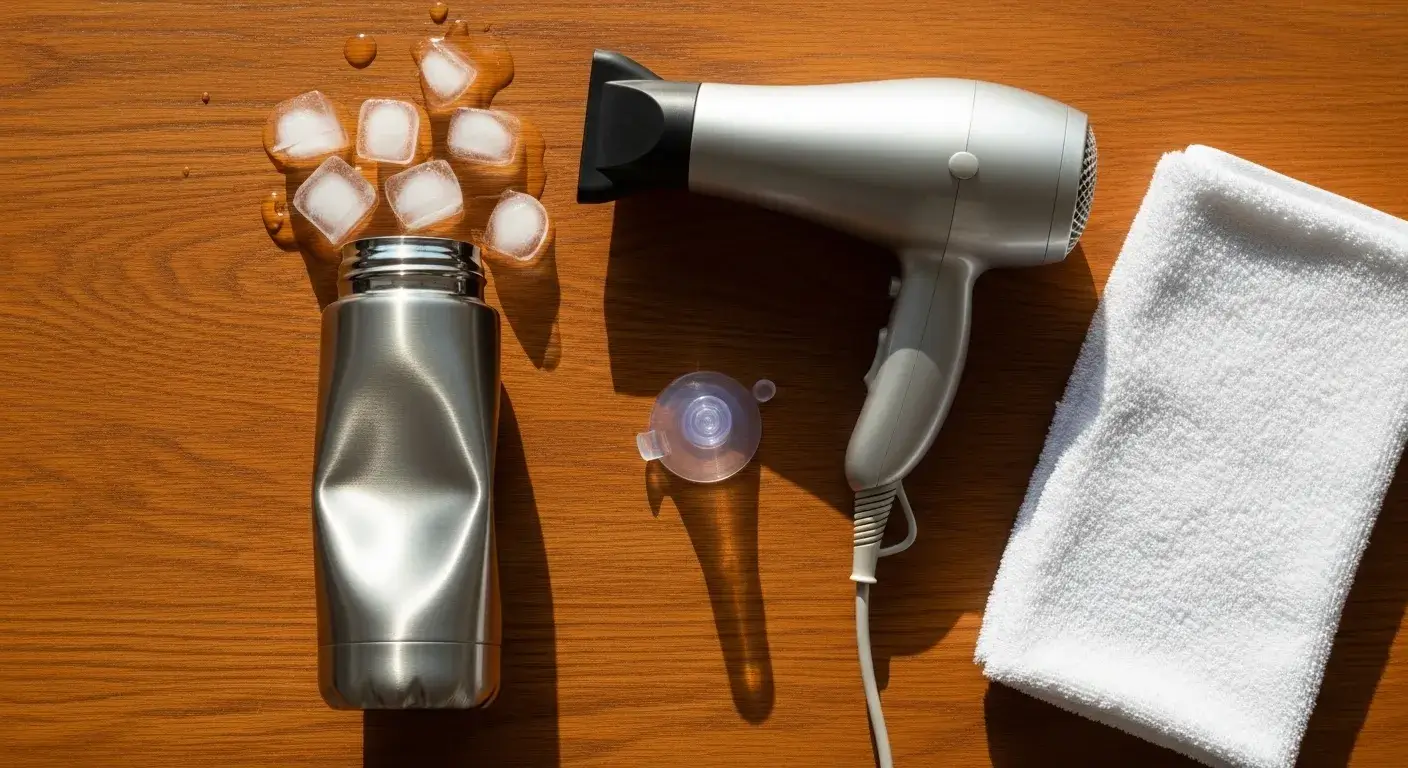
Stressed over a dent on your favorite S’well bottle? This guide helps you restore its shape using simple, safe, and proven techniques.
Yes, dents in S’well water bottles can often be fixed at home using boiling water, ice baths, compressed air, or suction tools—without harming insulation.
Worried your bottle’s dent is permanent? Keep reading to discover safe, effective fixes that anyone can do.
Can dents on an S'well water bottle be fixed at home?
A dent doesn’t mean your bottle’s ruined. You can often fix it yourself with tools you already have.
Many S’well bottle dents can be reduced using heat, cold, or pressure, depending on dent depth and location.

The boiling water and ice bath method
This is the most widely used method.
- Pour boiling water on the dented area.
- Immediately dunk the bottle in ice water.
- Repeat 2–3 times if needed.
The rapid temperature change causes the metal to expand and contract, helping the dent pop out.
Use compressed air and ice
Fill one-third of the bottle with water and freeze it. Then:
- Spray compressed air into the bottle.
- The pressure change from cold inside and warm outside may push the dent outward.
“I used this trick twice and saw a noticeable improvement,” — Redittor from r/Hydroflask
What are the safest methods to remove dents without damaging insulation?
Safety is key when working with heated bottles or applying pressure.
Avoid overheating or using sharp tools. Choose gradual methods like heat-and-cold cycles1, suction, or tapping from inside.
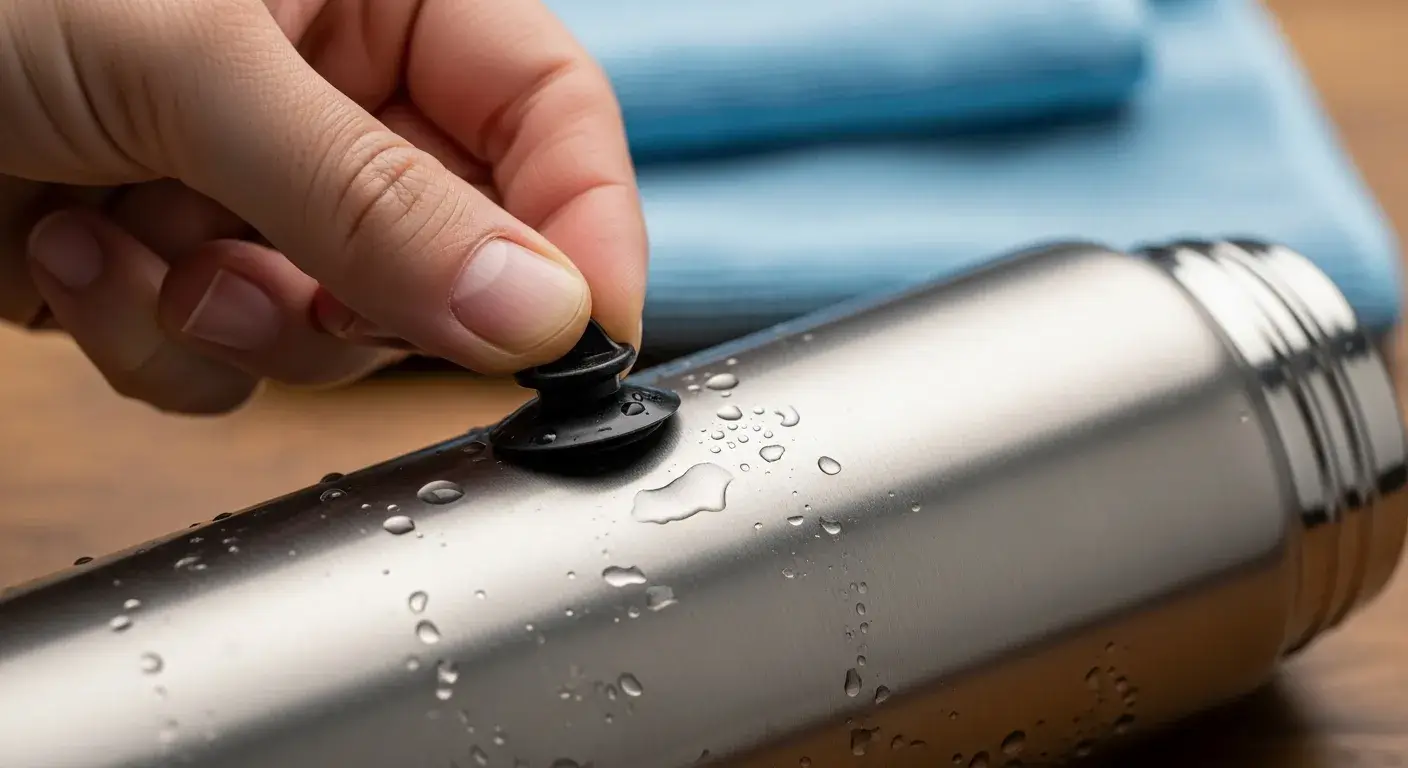
Suction cup or mini plunger
A small suction tool can pull shallow dents:
- Wet the surface slightly.
- Apply suction cup and pull gently.
- Combine with heat method for better effect.
Tap gently from the inside
If the dent is on the bottom or near the mouth:
- Use a wooden spoon or rubber mallet.
- Apply light taps from inside the bottle.
Never use metal tools—they can scratch the bottle or damage insulation.
How does heat help in popping out dents from stainless steel bottles?
Heat softens the metal, making it easier to reshape.
Heating expands the metal around the dent. Rapid cooling causes it to contract, often pulling the dent back into place.
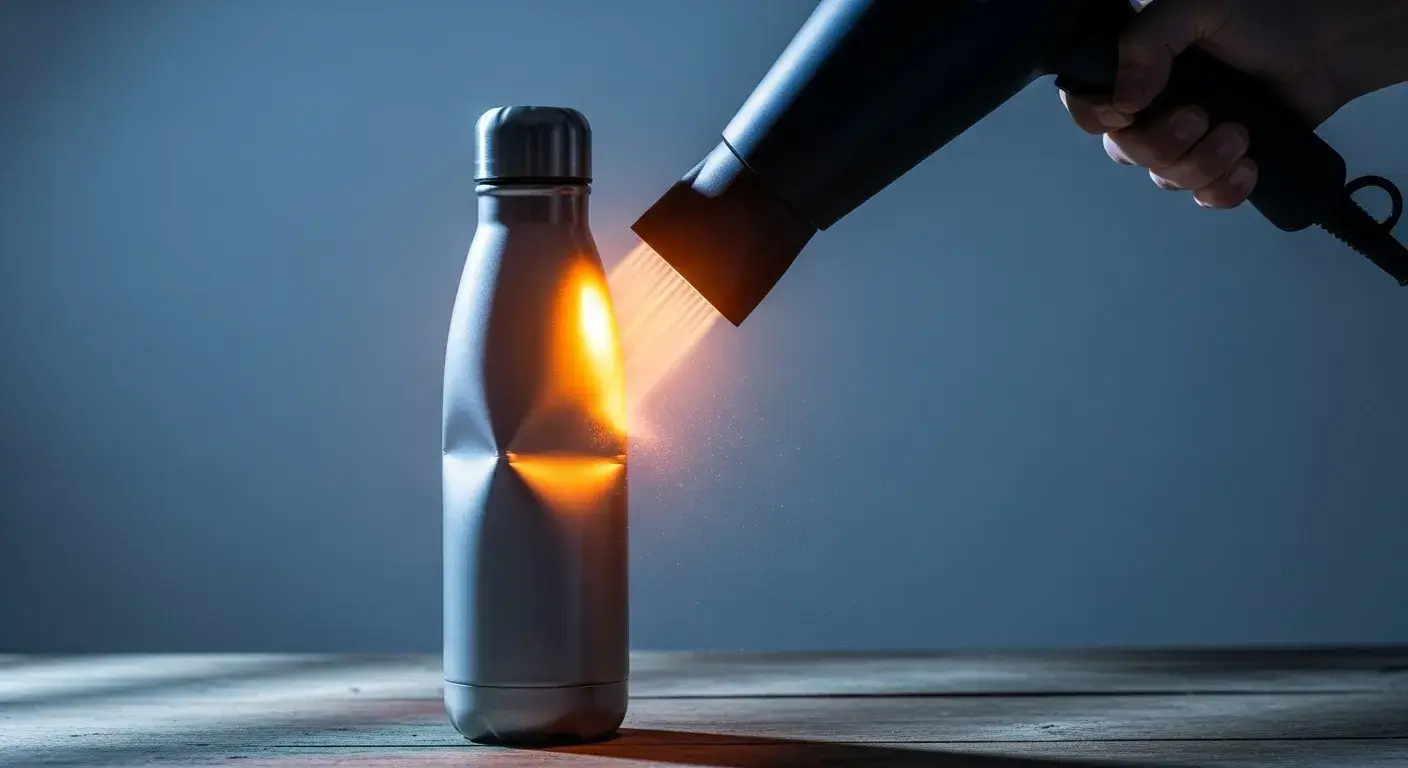
Best practice for heating:
- Use a hairdryer or pour boiling water directly.
- Focus heat for 1–2 minutes.
- Follow with ice or cold water right after.
Don’t overheat. Stainless steel2 doesn’t need more than 100°C.
Can compressed air or freezing techniques be used on S'well bottles?
Yes, but they require care.
Using internal freezing and external warm air, compressed air3 creates enough pressure difference to move small dents.
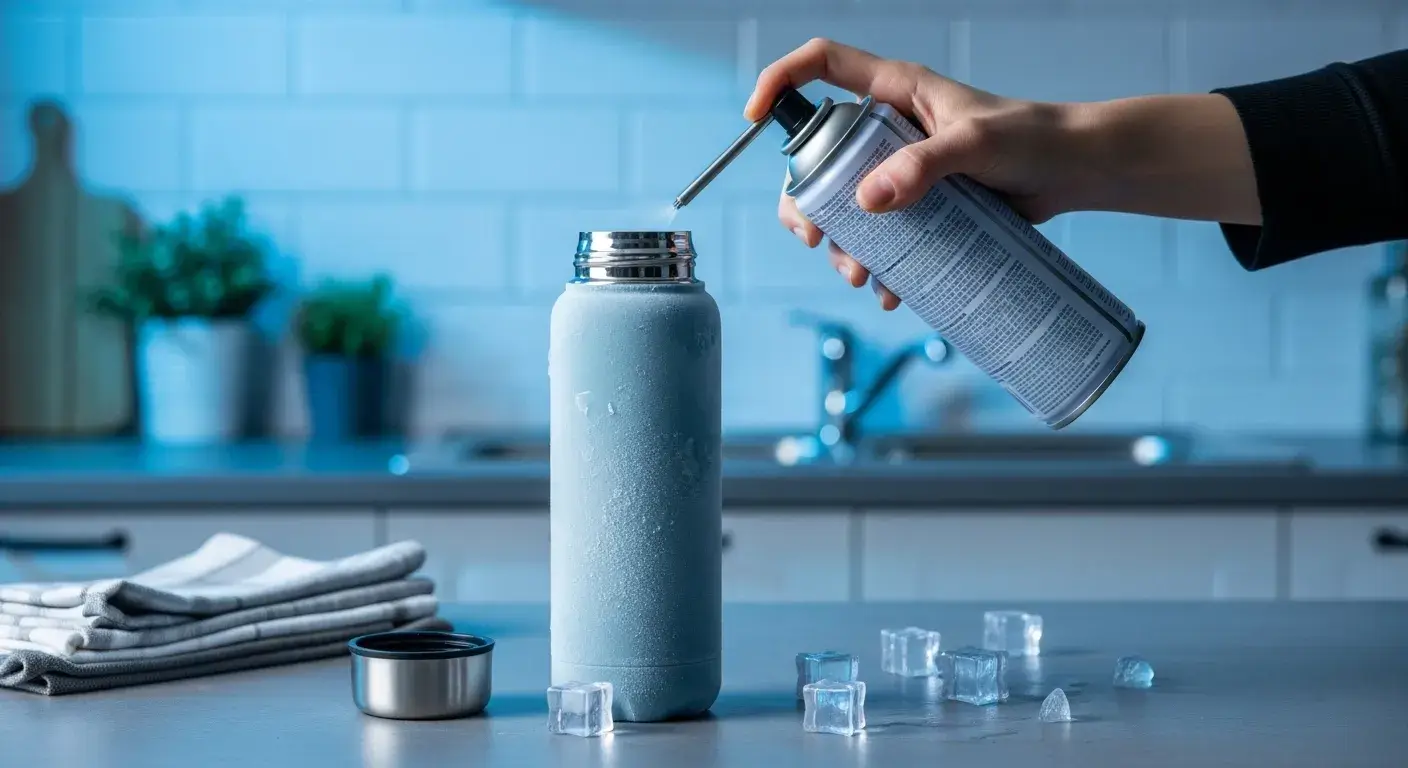
Steps:
- Fill the bottle ⅓ with water and freeze it.
- Remove cap, then spray compressed air inside.
- Listen for a pop—repeat if needed.
Never overfill or seal the cap while freezing. The expansion could break the bottle.
What tools can assist in fixing dents on water bottles?
Using household tools helps improve precision and reduce damage risk.
Plastic tools, rubber mallets, or suction cups4 allow safe dent removal without scratching or breaking the vacuum seal.
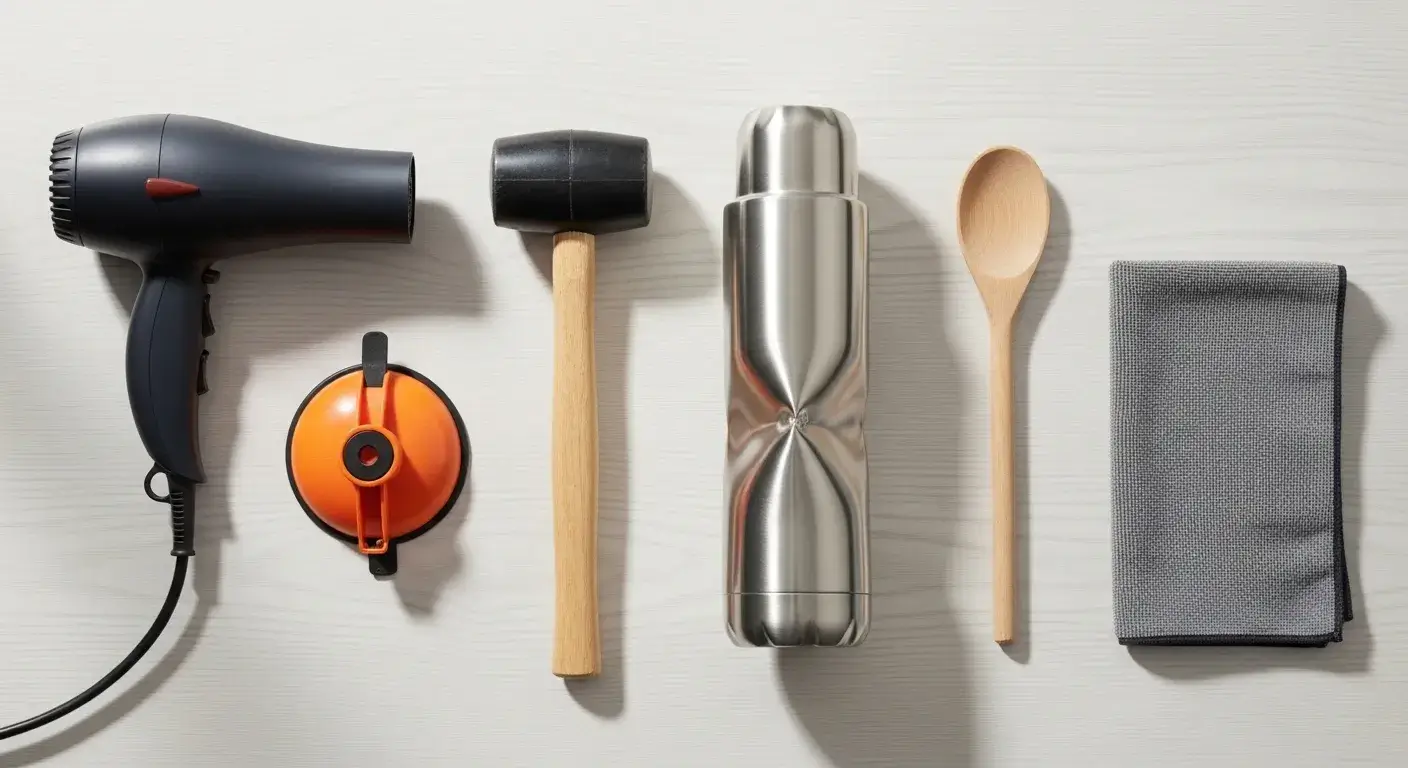
Recommended tools:
- Hair dryer or heat gun (low setting)
- Ice cubes or cold packs
- Small suction cup
- Rubber or wooden spoon
- Microfiber cloth (for cleaning before starting)
Avoid using metal hammers, knives, or abrasives.
When should I consider professional repair or replacement?
Not all dents are repairable.
If the bottle leaks, wobbles, or no DIY method works, consider replacing it. Professional repair5 for insulated bottles is rare.
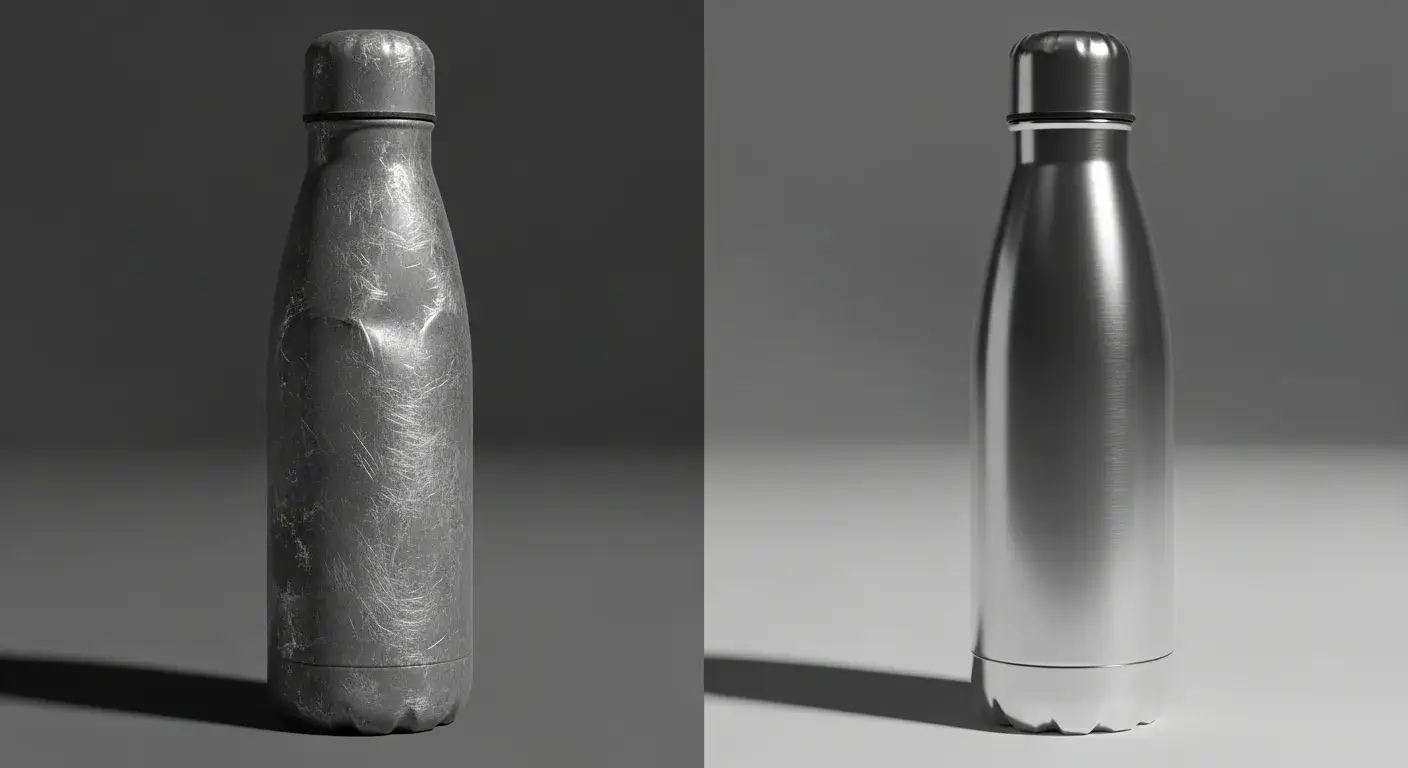
Check if replacement is better:
- Dents near the base affecting stability
- Cracks or leaks after dent
- Coating is chipping due to dent
S’well and other brands don’t typically offer dent repair, but check your warranty.
How to avoid causing dents on your S'well bottle in the future?
Prevention saves time and money.
Use protective accessories and avoid dropping or rolling the bottle on hard surfaces.
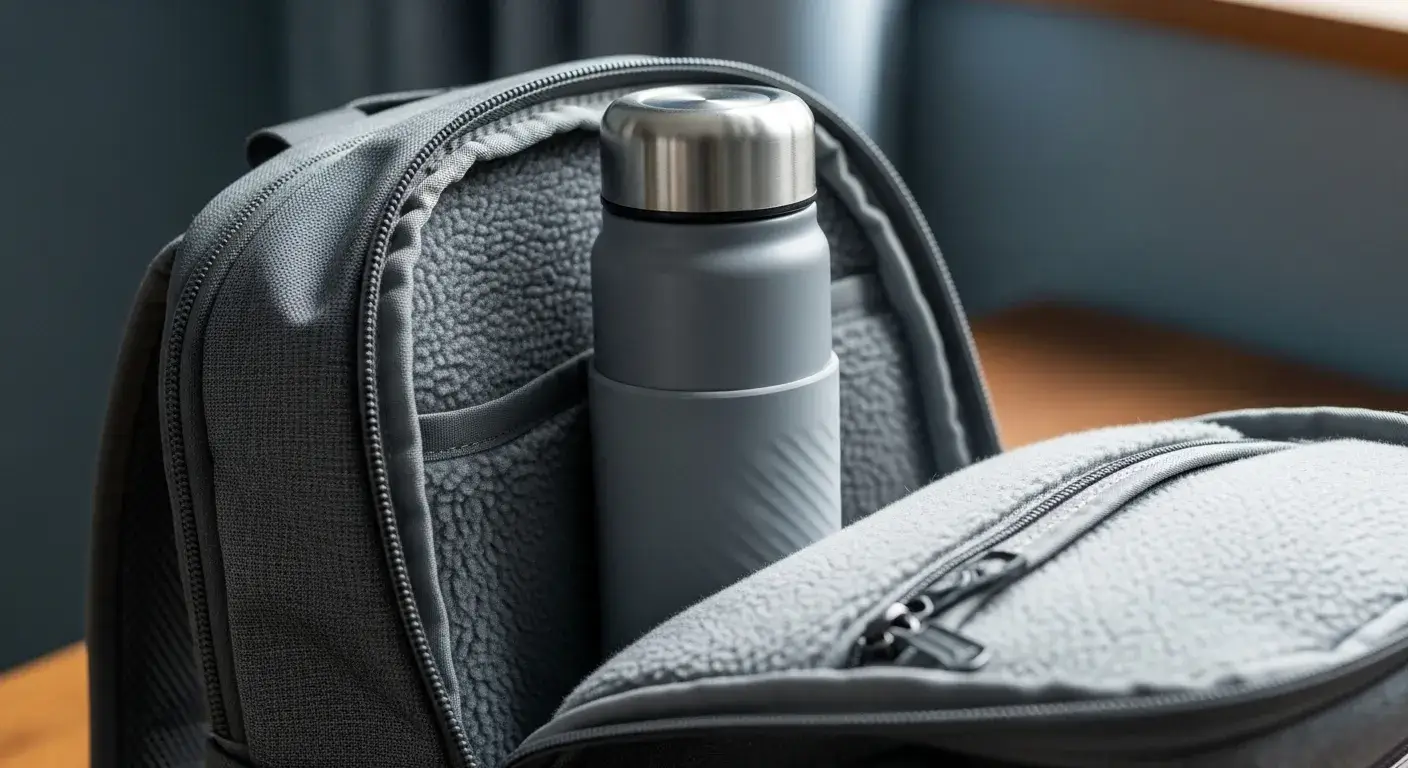
Practical tips:
- Use silicone sleeves or wraps
- Place bottles in soft compartments during travel
- Don’t place under heavy items
- Clean regularly to reduce drops from slippery surface
Are there risks to the bottle’s insulation or coating when fixing dents?
Yes, but they’re avoidable.
Excessive heat or pressure may break the vacuum seal or crack paint coatings6 if not done carefully.
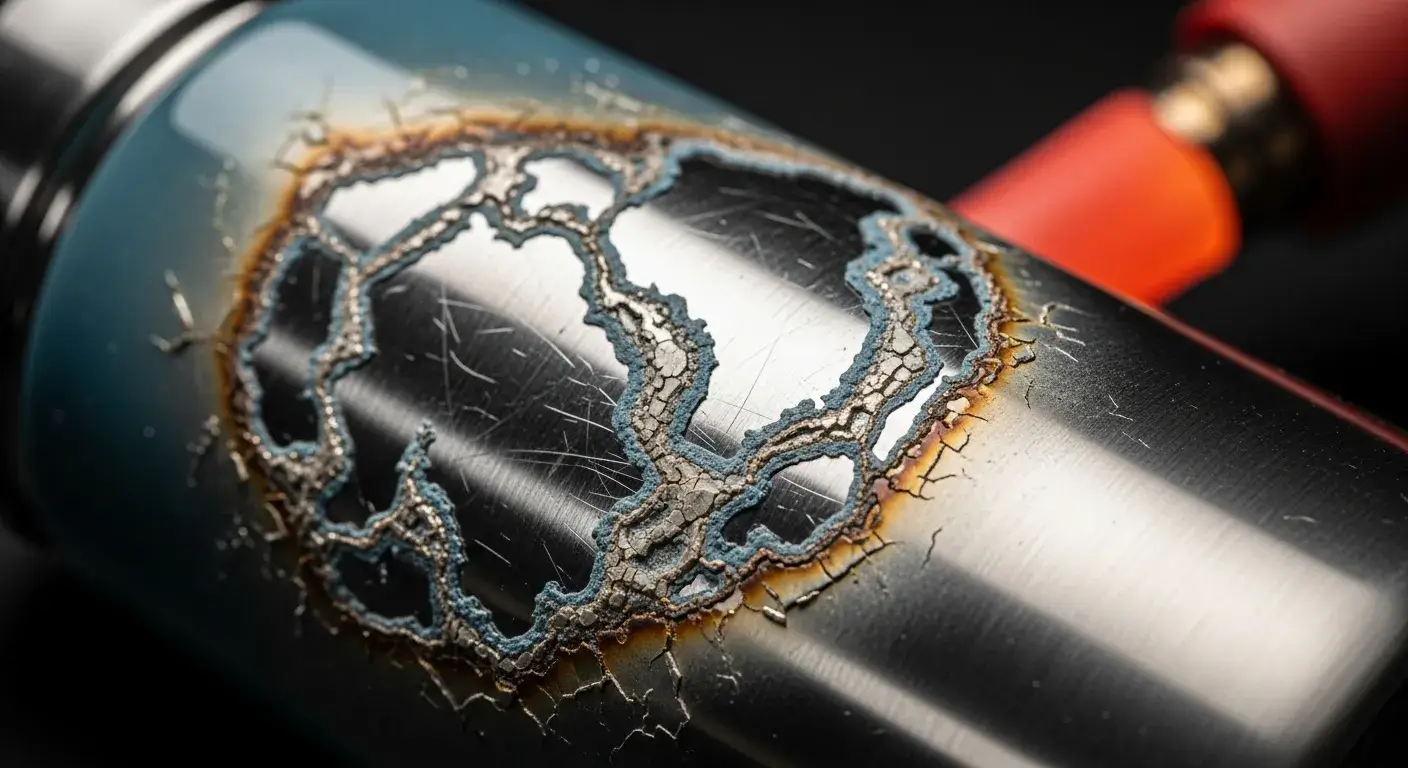
Watch for these risks:
- Bubbling or cracking of powder coat (from high heat)
- Rusting if outer shell is scratched
- Vacuum loss (bottle no longer insulates)
Use gloves and never rush the process.
How effective are DIY dent removal methods for S'well bottles?
They often work well—especially for shallow dents.
DIY dent removal can significantly improve appearance, though full restoration isn’t guaranteed.
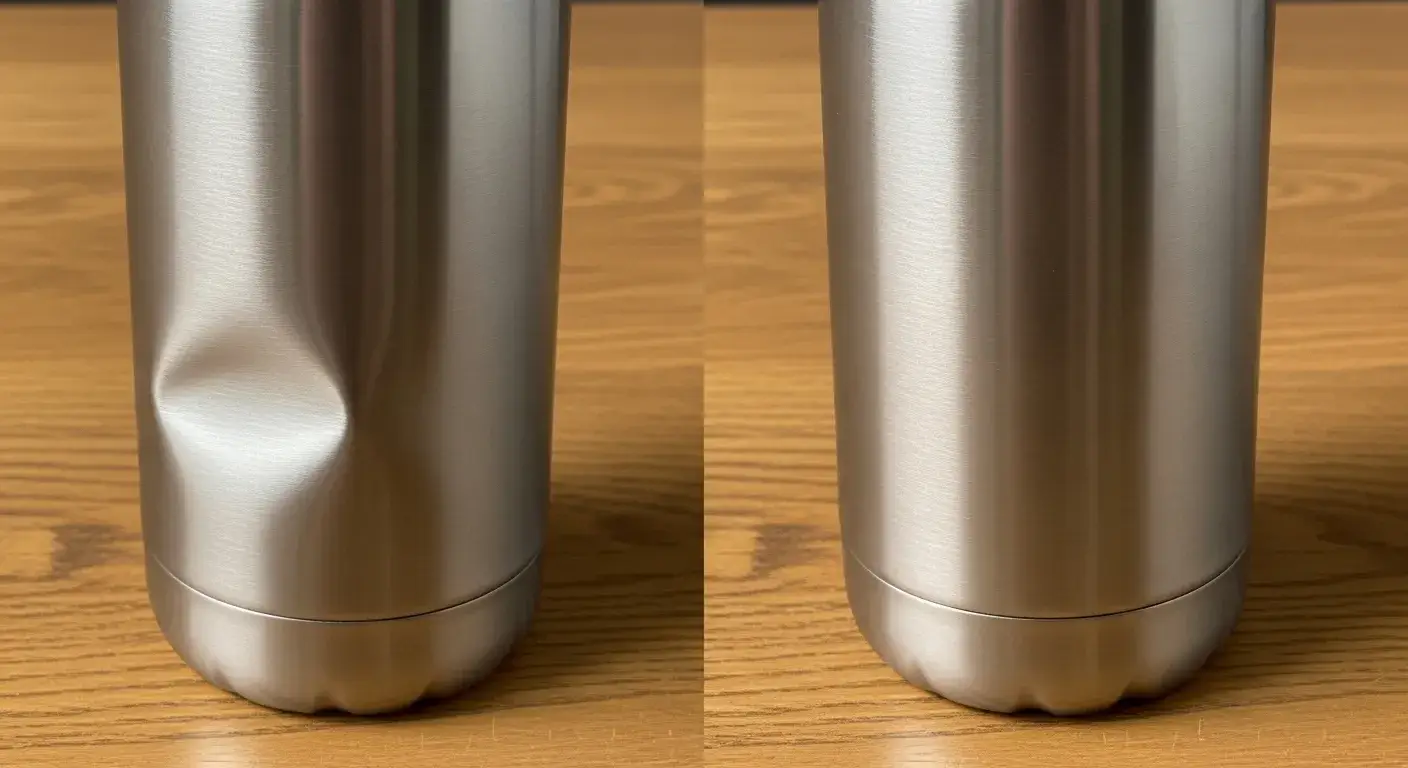
Most effective combinations:
- Boiling water + Ice dunk
- Hair dryer + suction
- Tap from inside + heat cycle
Repeat 2–3 times if needed, giving time between each session.
What precautions should I take during the dent repair process?
Being safe ensures you don’t worsen the problem.
Always use protective gloves, test each method on a small area first, and never apply excessive force.
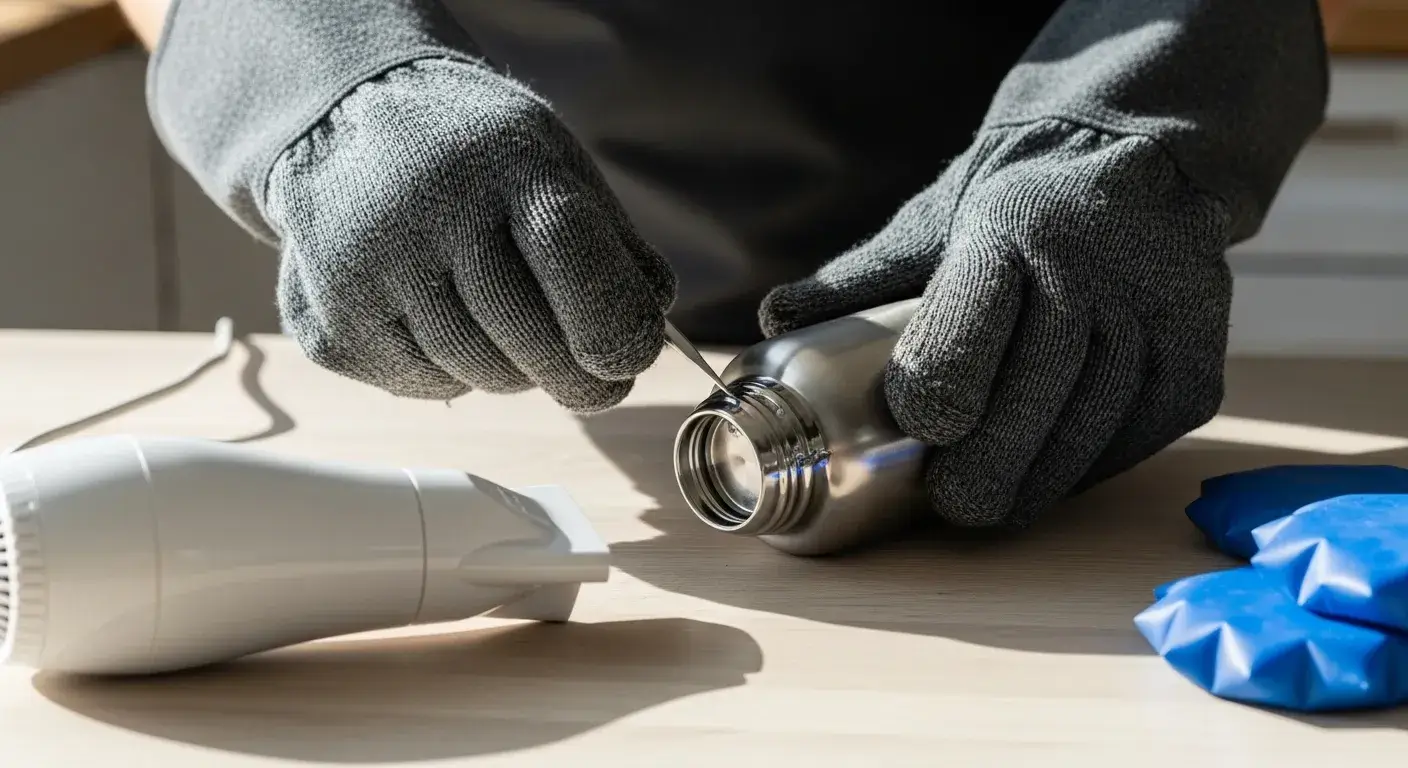
Final checklist:
- Protect your hands from hot surfaces
- Avoid sealing bottle with water inside during freezing
- Don’t use excessive heat or pressure
- Check insulation after repair (test how long it stays hot/cold)
Conclusion
S'well bottle dents can often be fixed at home using safe and simple methods involving heat, cold, or suction—no special tools needed.
Footnotes:
-
Learn how thermal expansion and contraction help safely reshape stainless steel bottles ↩
-
Understand how stainless steel reacts to heat and when to stop applying it ↩
-
See how compressed air works by creating pressure differentials in bottles ↩
-
Explore how suction tools can aid dent repair without damaging the surface ↩
-
Find out why insulated bottle repairs are uncommon and often not cost-effective ↩
-
Learn how high heat affects powder coatings and what signs of damage to look for ↩

